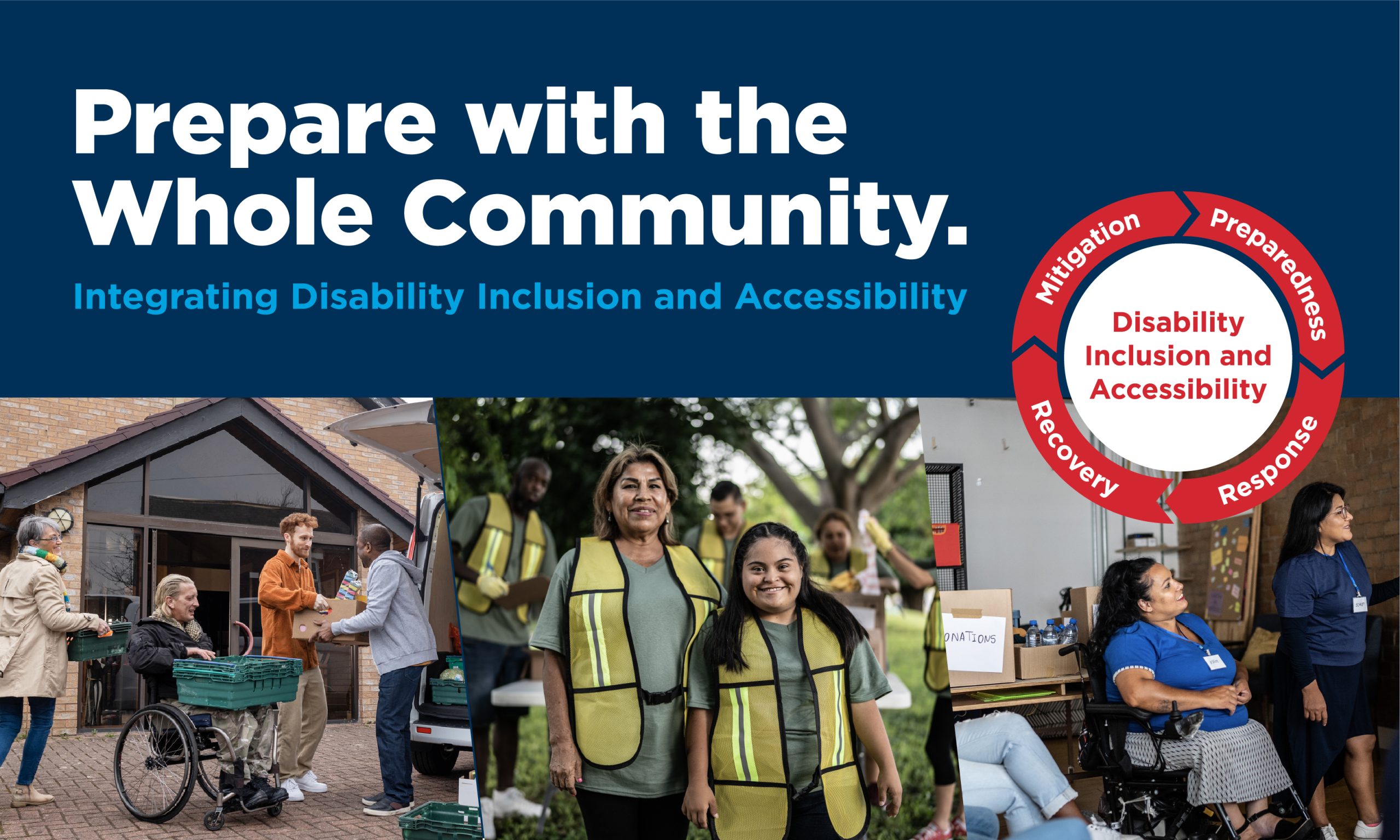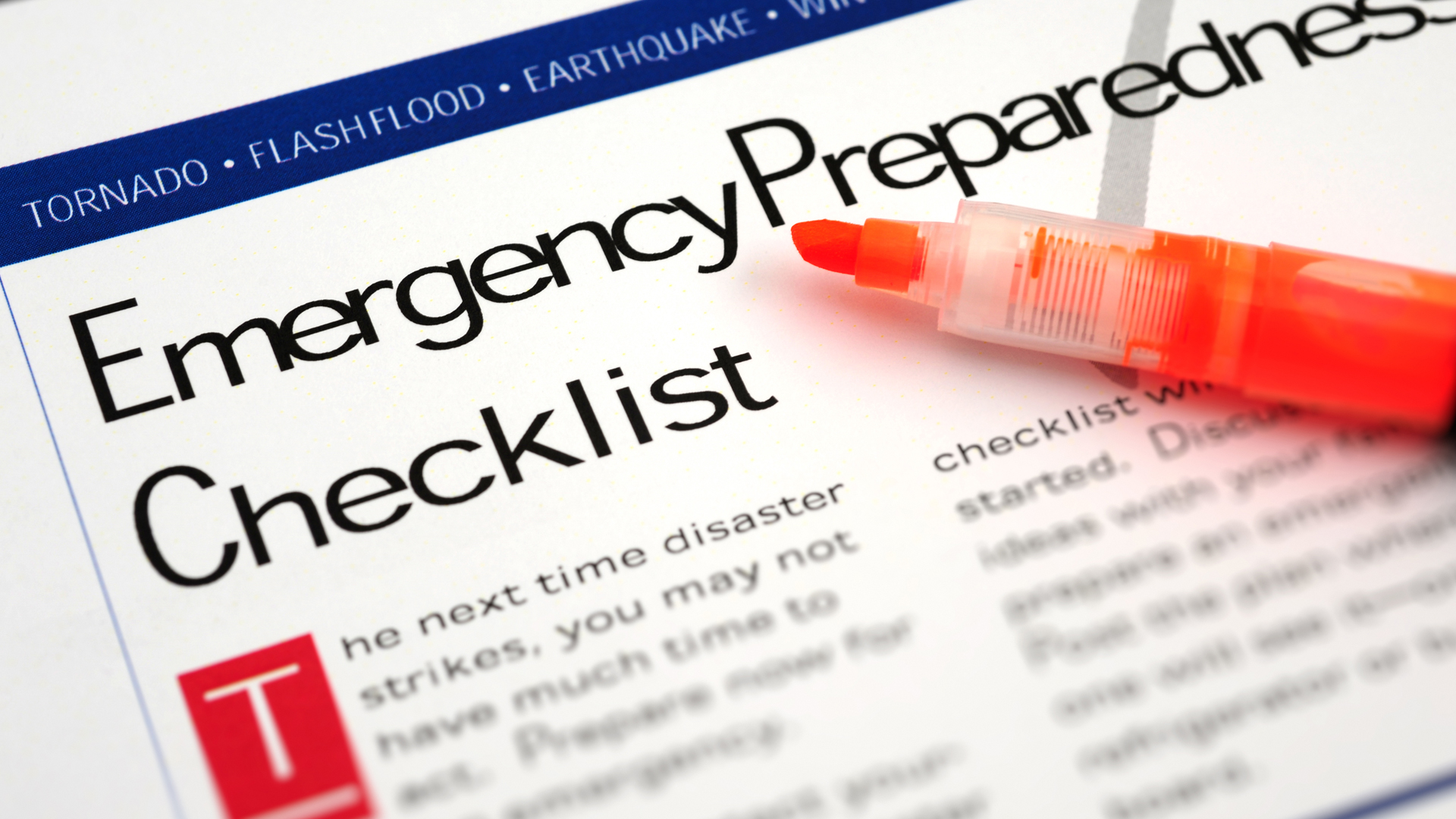National Preparedness Month 2024
September is National Preparedness Month: an observance “to raise awareness about the importance of preparing for disasters and emergencies that could happen at any time.”
Disability inclusion and accessibility is the theme for CDC’s 2024 National Preparedness Month commemoration. CDC is raising awareness about preparing the whole community by integrating disability inclusion and accessibility in all phases of emergency preparedness and response.
CDC’s National Preparedness Month 2024 Objectives:

- Promote CDC resources to state, tribal, local, and territorial health departments, other federal agencies, and emergency readiness and response partners to support and advocate for the needs of people with disabilities in public health emergencies.
- Provide opportunities for CDC responders to increase their capabilities to support and advocate for the needs of people with disabilities in public health emergencies.
- Highlight state and local initiatives integrating disability inclusion and accessibility in their emergency management.
- Share ideas and information addressing disability inclusion and accessibility across CDC and other federal agencies.
In 2023, ORR launched a series of discussion-based activities to help public health departments develop “whole community” plans that consider the impacts of social determinants of health on personal health preparedness and response.
Social Determinants of Health
Social determinants of health (SDOH) are non-medical factors that influence health outcomes. They are the conditions in which people are born, live, learn, work, play, worship, and age, and the wider set of forces and systems shaping the conditions of daily life.

SDOH are grouped by Healthy People 2030 into five key areas.
- Economic stability
- Education access and quality
- Health care access and quality
- Neighborhood and built environment
- Social and community context
About This Discussion Guide Series
CDC’s Office of Readiness and Response (ORR) helps U.S. communities prepare for, respond to, and recover from emergencies with evidence-based recommendations, technical assistance, and resources.
ORR created these discussion-based activities to help public health departments develop “whole community” plans that consider the impacts of SDOH on personal health preparedness and response.
This infographic can help your community decide what topic area to select to begin your discussion.
What is a Discussion Guide?
A discussion-based activity is like a discussion-based preparedness exercise. It follows a facilitated process for evaluating preparedness and response plans, procedures, partnerships, and planning considerations. Its purpose is to help health departments and communities to
- better understand how conditions associated with SDOH affect how people prepare for and respond to emergencies.
- identify gaps in emergency planning, procedures, and partnerships associated with the impacts.
- think of ways to build new and leverage existing partnerships in the whole community to reduce or remove barriers to personal health preparedness for and response to emergencies.
A discussion-based activity involves an appointed facilitator and invited participants. Participants include traditional response partners, such as public health departments, healthcare systems, and emergency management agencies, and nontraditional support partners, such as community- and faith-based organizations.
The goal of these discussion-based activities is to engage the whole community in efforts to
- understand the needs and capabilities of the community.
- create opportunities and conditions for everyone to prepare for and respond to emergencies to their full potential.
Only by taking a whole community approach can communities improve personal and public health preparedness, response, and resilience.
The phrase “whole community” appears a lot in preparedness materials. It means emergency preparedness, response, and recovery are shared responsibilities.
Whole community includes:
- Individuals and families, including those with access and functional needs
- Businesses
- Faith-based and community organizations
- Nonprofit groups
- Schools and academia
- Media outlets
- All levels of government, including state, local, tribal, territorial, and federal partners
Limitations
The discussion guides have the following limitations:
- The guides assume that SDOH impact personal health preparedness and response.
- The guides assume that facilitators and participants understand SDOH or will learn about them before the discussion.
- The guides are a starting point for addressing the impacts of SDOH on personal health preparedness and response. They are one of the tools available to help practitioners address SDOH.
- The scenario and discussion questions do not address all key issues in the key areas. Examples and evidence of SDOH impacts and interventions are likely to evolve with additional research and experience.
- The usefulness of the information gathered from the discussions depends on who is invited to participate. SDOH affect everyone. The effects are more negative for some people than others. Invite as many members of the whole community as possible to participate in the discussion and/or contribute to the conversation in other ways, such as through a survey.
Partnering for Preparedness
CDC joins partners every fall to promote actions people can take to increase their personal readiness and resilience during crises. Please consider redistributing this information among your community members through public meetings, local government websites, social media platforms, and community events. Join us and our partners to promote National Preparedness Month 2023.